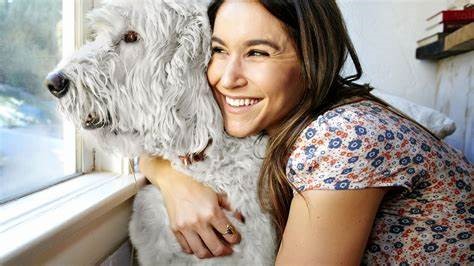For millions of families, bringing a dog into the home is a dream filled with warmth, companionship, and joy. But for people with pet allergies, that dream can often feel out of reach. Sneezing, itching, watery eyes, and even more severe symptoms can make living with a dog difficult, if not impossible. That’s where doodles — lovable mixes of poodles and other breeds — and the people behind Lonestar Doodles are truly changing lives.
Doodle breeds like goldendoodles, bernedoodles, irishdoodles, and sheepadoodles are not just adorable and intelligent — they’re also widely celebrated for their low-shedding, allergy-friendly coats. These dogs offer many families something they never thought possible: the chance to enjoy a dog without suffering from allergies.
Let’s explore how doodles are making pet ownership more accessible and why their unique coats make all the difference.
FEATURED NEWS: How the West Valley evolved into hotbed for innovation and growth
What Causes Pet Allergies in the First Place?
Before diving into what makes doodles special, it’s important to understand what actually causes pet allergies. Many people assume it’s the fur, but in reality, most allergic reactions are triggered by a protein found in a dog’s saliva, dander (tiny flakes of skin), and urine. When a dog sheds, this protein spreads through the home via hair and skin flakes.
Dogs that shed less tend to release less of this allergen into the environment. That’s why low-shedding breeds are often considered “hypoallergenic” — though no dog is completely allergen-free, these breeds can significantly reduce exposure to the things that cause allergic reactions.
Poodle Power: The Foundation of the Doodle Coat
The secret behind the doodle’s allergy-friendly nature lies in their poodle lineage. Poodles have tight, curly coats that don’t shed the same way other breeds do. Instead of dropping hair around the home, poodle fur tends to trap loose hairs within the curls, keeping allergens more contained.
When poodles are crossed with other breeds — like golden retrievers, Bernese mountain dogs, or Irish setters — the resulting doodle often inherits that low-shedding quality. This makes doodles a smart choice for families who want the friendly temperament of other breeds combined with the allergy-friendly coat of the poodle.
Coat Types: Wavy, Curly, and Everything in Between
Not all doodle coats are the same. The appearance and texture can vary, depending on the generation of the doodle and the specific breed mix. Most doodles fall into one of three coat categories:
1. Curly Coat
Similar to a poodle’s coat, curly-haired doodles shed the least and are typically the most allergy-friendly. Their tight curls trap dander and hair, which means less spreading of allergens. These coats require regular brushing and grooming, but many allergy sufferers find this coat type the most manageable.
2. Wavy Coat (Fleece)
A wavy or fleece coat is a mix between straight and curly. It’s soft, flows in gentle waves, and is generally low-shedding. This coat is often seen in goldendoodles and sheepadoodles and offers a great balance between manageability and allergy-friendliness.
3. Straight Coat
Sometimes called a “flat coat,” this type resembles the non-poodle parent more closely. These doodles may shed more and might not be as allergy-friendly as their curlier-coated siblings. However, regular grooming can still help manage dander levels.
Knowing the difference can help families choose the right pup for their specific needs — and good breeders will guide families through that decision-making process.
Living with a Doodle: Tips for Allergy-Prone Families
Even with a low-shedding dog, managing allergies requires attention and care. Here are some simple strategies that help allergy-prone families live comfortably with a doodle:
- Regular Grooming: Brushing several times a week and professional grooming every 6–8 weeks helps control dander buildup and keeps coats healthy.
- Clean Home Habits: Use HEPA filters in vacuums and air purifiers, wash dog bedding frequently, and keep dogs off beds and couches if allergies are severe.
- Wipe Downs: After outdoor play, wiping your doodle’s coat and paws can reduce pollen and allergens being brought inside.
- Designated Dog Spaces: Creating pet-free zones in the house (like the bedroom) gives allergy sufferers a break from exposure.
These small adjustments can go a long way in making a doodle not just a beloved companion, but a manageable one too.
Real Change, Real Joy
Families across the country — especially those who once believed pet ownership was off the table — are discovering the joy that doodles bring. It’s more than just having a pet; it’s about being part of daily routines, birthday parties, morning snuggles, and quiet evenings on the couch.
At places like Lonestar Doodles, this mission to match families with the right low-shedding, allergy-conscious pup is taken to heart. With years of experience and an emphasis on customer care before and after adoption, breeders like Lonestar have helped hundreds of families find a doodle that fits their lifestyle — including those with mild to moderate pet allergies.
One of the most powerful testaments to their impact is how many families return for a second doodle, or refer their friends who never thought they could live with a dog.
Doodles Are More Than a Trend — They’re a Lifeline
It’s easy to see why doodles have become so beloved. They’re smart, affectionate, trainable, and easy on the eyes. But for allergy sufferers, they represent something deeper: a chance to finally experience the joy of having a dog.
By combining low-shedding coats with lovable personalities, doodles offer the best of both worlds. And thanks to ethical breeders who prioritize health, communication, and long-term support — like Lonestar Doodles — families across the country are opening their hearts and homes to a new kind of companion.
Whether it’s a goldendoodle bounding into your arms, a sheepadoodle curling up beside your child, or a bernedoodle joining the family hike, these allergy-friendly pups are more than pets. They’re possibilities. They’re memories waiting to be made.
And for many, they’re the start of a new life filled with love — and fewer sneezes.




